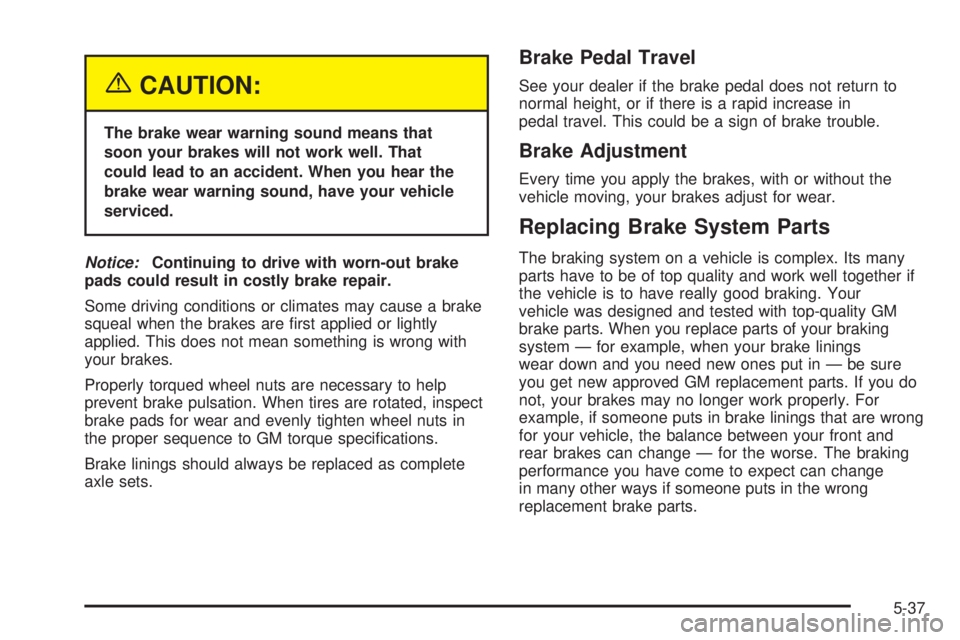Page 7 of 410

Front Seats......................................................1-3
Manual Seats................................................1-3
Six-Way Power Seats.....................................1-4
Power Lumbar...............................................1-4
Heated Seats.................................................1-5
Reclining Seatbacks........................................1-5
Head Restraints.............................................1-7
Center Seat...................................................1-7
Rear Seats.......................................................1-8
Split Folding Rear Seat...................................1-8
Safety Belts...................................................1-10
Safety Belts: They Are for Everyone................1-10
Questions and Answers About Safety Belts......1-14
How to Wear Safety Belts Properly.................1-15
Driver Position..............................................1-15
Shoulder Belt Height Adjustment.....................1-22
Safety Belt Use During Pregnancy..................1-23
Right Front Passenger Position.......................1-23
Center Front Passenger Position.....................1-24
Rear Seat Passengers..................................1-25
Rear Safety Belt Comfort Guides....................1-27
Safety Belt Pretensioners...............................1-30
Safety Belt Extender.....................................1-30Child Restraints.............................................1-31
Older Children..............................................1-31
Infants and Young Children............................1-33
Child Restraint Systems.................................1-37
Where to Put the Restraint.............................1-40
Top Strap....................................................1-41
Top Strap Anchor Location.............................1-43
Lower Anchorages and Top Tethers for
Children (LATCH System)...........................1-43
Securing a Child Restraint Designed
for the LATCH System...............................1-45
Securing a Child Restraint in a Rear
Seat Position............................................1-46
Securing a Child Restraint in the Center
Front Seat Position....................................1-48
Securing a Child Restraint in the Right
Front Seat Position....................................1-48
Airbag System...............................................1-51
Where Are the Airbags?................................1-53
When Should an Airbag In�ate?.....................1-56
What Makes an Airbag In�ate?.......................1-57
How Does an Airbag Restrain?.......................1-57
What Will You See After an Airbag In�ates?.....1-58
Section 1 Seats and Restraint Systems
1-1
Page 28 of 410
To unlatch the belt, just push the button on the buckle.
The belt should go back out of the way.
Before you close the door, be sure the belt is out of the
way. If you slam the door on it, you can damage
both the belt and your vehicle.
Shoulder Belt Height Adjustment
Before you begin to drive, move the shoulder belt
adjuster to the height that is right for you.
Adjust the height so that the shoulder portion of the
belt is centered on your shoulder. The belt should
be away from your face and neck, but not falling off
your shoulder.
To move it down, push
down on the release
lever (A) move the height
adjuster to the desired
position. You can move
the adjuster up just
by pushing up on the
shoulder belt guide.
After you move the adjuster to where you want it, try to
move it down without squeezing the release lever to
make sure it has locked into position.
1-22
Page 313 of 410

{CAUTION:
The brake wear warning sound means that
soon your brakes will not work well. That
could lead to an accident. When you hear the
brake wear warning sound, have your vehicle
serviced.
Notice:Continuing to drive with worn-out brake
pads could result in costly brake repair.
Some driving conditions or climates may cause a brake
squeal when the brakes are �rst applied or lightly
applied. This does not mean something is wrong with
your brakes.
Properly torqued wheel nuts are necessary to help
prevent brake pulsation. When tires are rotated, inspect
brake pads for wear and evenly tighten wheel nuts in
the proper sequence to GM torque speci�cations.
Brake linings should always be replaced as complete
axle sets.
Brake Pedal Travel
See your dealer if the brake pedal does not return to
normal height, or if there is a rapid increase in
pedal travel. This could be a sign of brake trouble.
Brake Adjustment
Every time you apply the brakes, with or without the
vehicle moving, your brakes adjust for wear.
Replacing Brake System Parts
The braking system on a vehicle is complex. Its many
parts have to be of top quality and work well together if
the vehicle is to have really good braking. Your
vehicle was designed and tested with top-quality GM
brake parts. When you replace parts of your braking
system — for example, when your brake linings
wear down and you need new ones put in — be sure
you get new approved GM replacement parts. If you do
not, your brakes may no longer work properly. For
example, if someone puts in brake linings that are wrong
for your vehicle, the balance between your front and
rear brakes can change — for the worse. The braking
performance you have come to expect can change
in many other ways if someone puts in the wrong
replacement brake parts.
5-37